
Homey vs. eedomus Plus - Smart home system comparison
Choosing your smart home system is the most important decision in your smart home, as it is the heart of your smart home. It determines what you can and cannot do. It also provides the user interface for your home. How much you will need to spend on devices, now and in the future, is determined by the systems' compatibility. And changing systems later on might be time-consuming. Needless to say, you want to choose right.
Homey and eedomus Plus are both smart home systems available in Europe. Homey is available in most Western European countries, and eedomus is available mainly in France. But how do the two compare? What are the differences and similarities? Let’s find out.
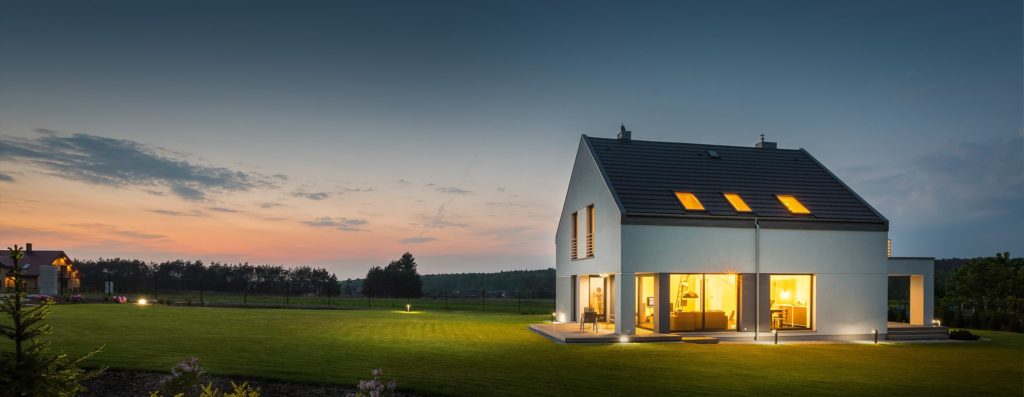
Summary
This is a summary of how the two systems stack up. For a more in-depth view, please read on.
| Homey | eedomus Plus | |
| Supported devices | 50,000 | ‘Thousands’ |
| Supported technologies | ||
| Z-Wave Plus | ✔️ | ✔️ |
| Zigbee | ✔️ | ❌ |
| Wi-Fi / LAN | ✔️ | ✔️ |
| Bluetooth Low Energy | ✔️ | ❌ |
| 868 MHz | ✔️ | ❌ |
| 433 MHz - Trust / DIO | ✔️ | + € 90 |
| 433MHz - Somfy | ✔️ | + € 90 |
| Infrared | ✔️ | ❌ |
| KNX-IP | ✔️ | ❌ |
| Voice assistants | ✔️ | ✔️ |
| Data graphs / Historical log | ✔️ Free | + € 5,90/month |
| Mobile App | Simple + Advanced | Simple |
| Mobile Push Notifications | ✔️ Free | + € 5,90/month |
| Privacy-aware | ✔️ | ✔️ |
| Automation | Powerful | Limited |
| Energy management | ✔️ | ❌ |
| Price | € 299 | € 299 |
| French language | ✔️ | ✔️ |
| Platform | Open app platform | Closed |
| Software status | Modern, fast development | Old-fashioned, mediocre development |

Compatibility and versatility
Let’s start with the most important aspect: compatibility. The connectivity and device support of the system determines what you can and cannot link. After all, you choose a smart home system to manage your whole house – not just 75%. Connectivity also influences the future: how much freedom do you have when you want to buy new devices?
The comparison between Homey and eedomus here is easy: where eedomus features two technologies, Z-Wave Plus and LAN / Wi-Fi, Homey supports seven. Homey also supports Z-Wave Plus and Wi-Fi, and adds Zigbee, Bluetooth Low Energy, 433MHz, 868MHz and Infrared. On a technology like Wi-Fi, Homey also supports more products. Examples include full support for Sonos and Spotify Connect speakers, or an integration with KNX-IP.
While it is possible to extend eedomus to also support 433MHz, you need to buy an extra RFXcom module and install that. This will set you back an extra € 90 at least, and is a less simple solution. Still, Zigbee and Infrared will be missing.
And these two are becoming very interesting, as more and more attractive, affordable products come with Zigbee nowadays. Take IKEA lightbulbs for example, or Xiaomi Aqara sensors. With Homey, you can directly add these to your smart home. Just like your TV and stereo, which use infrared.
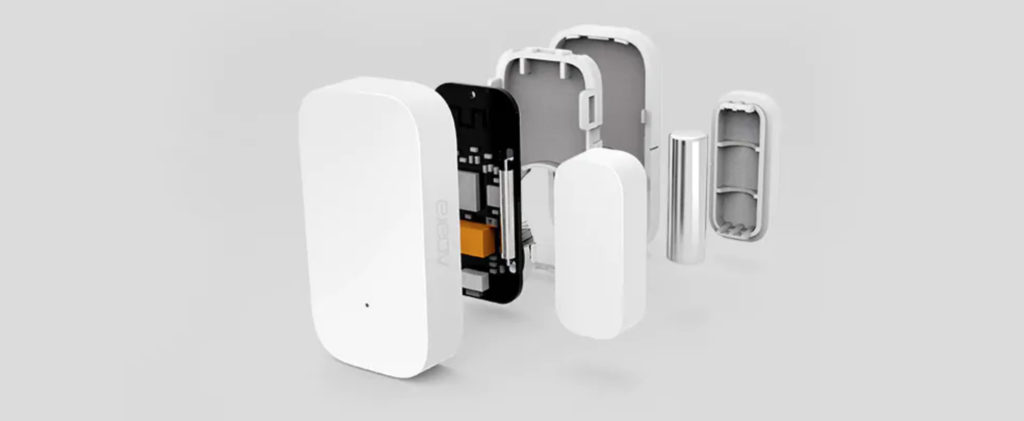
Interfaces, Apps and voice assistants
Both Homey and eedomus feature a mobile app, a web-app for automation, and integrations with voice assistants like Alexa and Google Assistant. The eedomus system does not allow you to view historical graphs or data about your home for free, like Homey Insights does. Viewing your historical data comes in a subscription of € 5,90 per month. However, the most important differences between the two systems can be found in the mobile app.
In short, the Homey app is more extended, more modern and easier to use compared to eedomus. For instance, it features extended yet friendly automation options with Homey Flow, right in the mobile app. It also features settings, network management, user invitation, energy management with Homey Energy and many more features not found in the eedomus app.
At the same time, the Homey app looks and works more modern than eedomus. Despite its options, it's still easy to use. The more advanced features are positioned well and can be disabled for users by inviting them on a ‘user’ or ‘guest’ level.
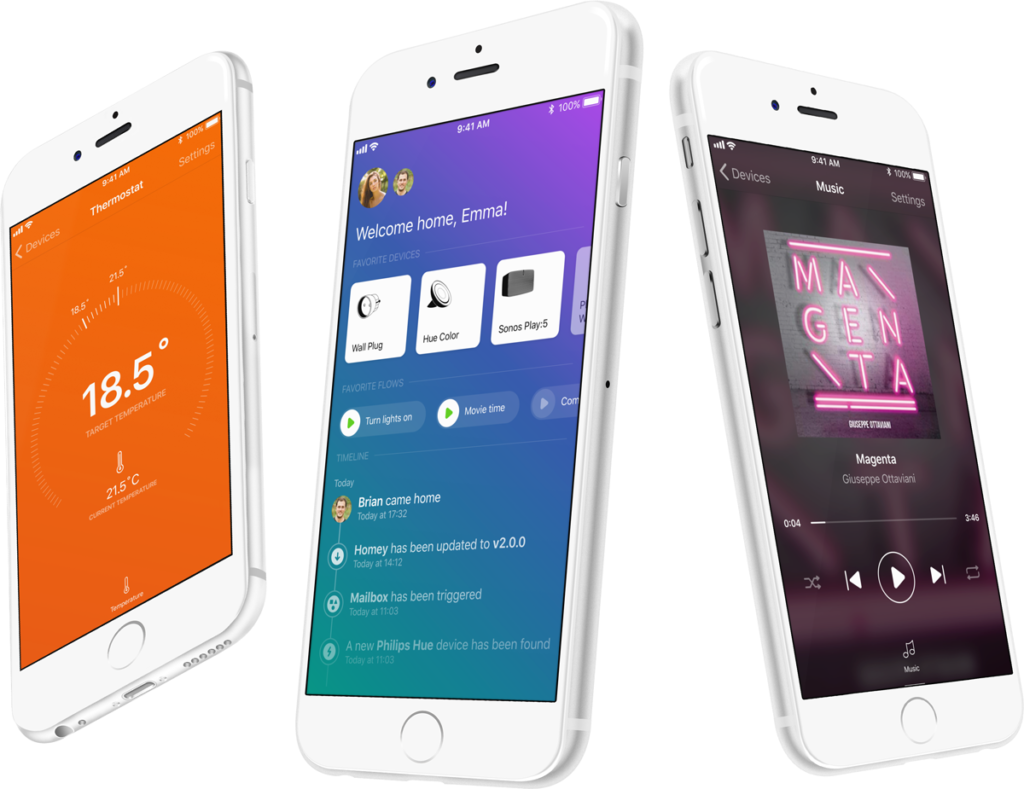
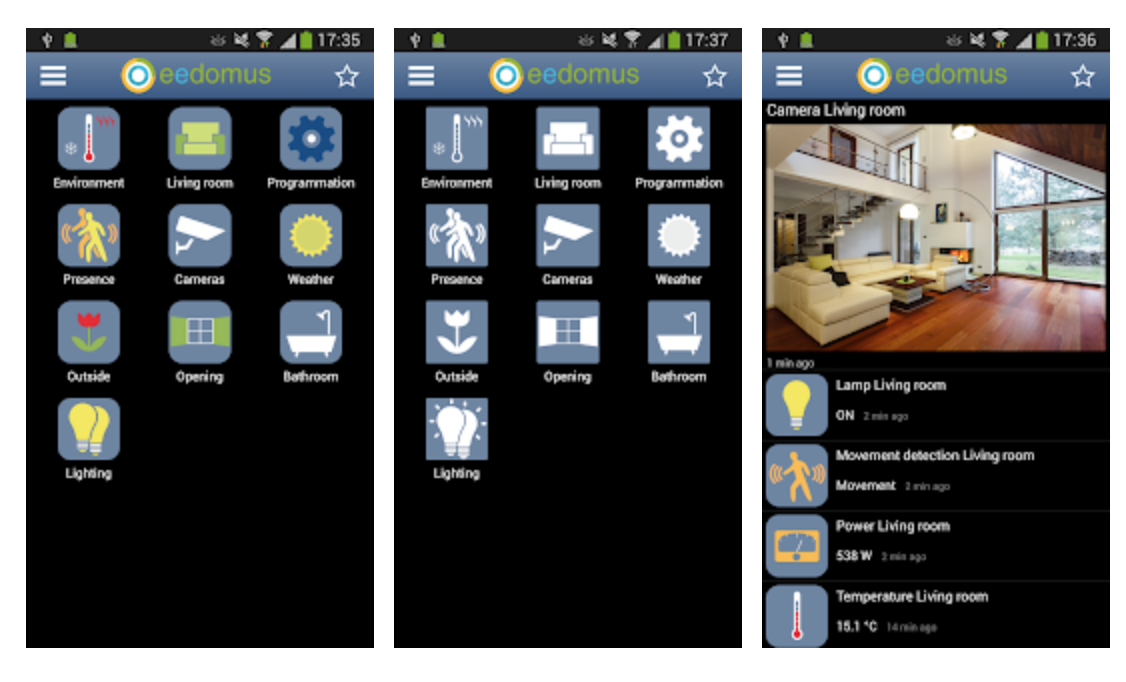
Privacy
Both systems are designed privacy-first. They don’t sell your data, don’t do profiling and fully comply with EU GDPR. In this regard there is no significant difference.
Visual appearance
This one is heavily subjective, so you’ll have to choose for yourself:

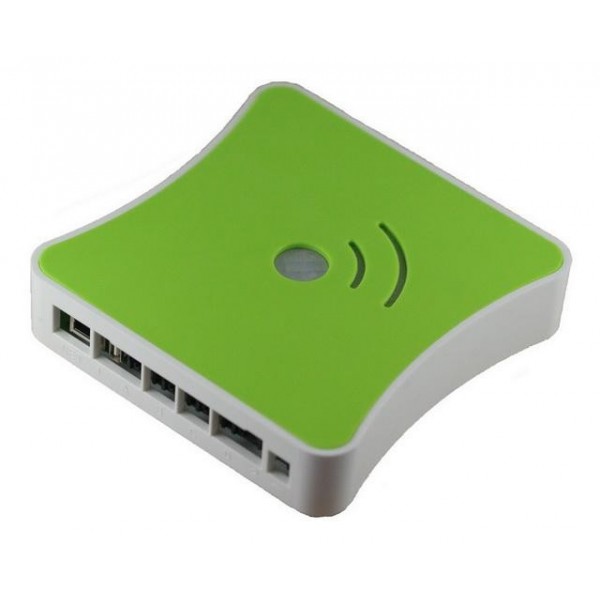
The one thing that can be said is that Homey is designed more for the living room, and eedomus less. Of course, Homey can also be put out of sight, but it has some interesting features that might make you want to put it in the living room:
- It looks cool and lets you talk about your smart home system to friends
- It has infrared, which requires a line-of-sight with you TV and/or stereo to work best
- It has a 3,5mm jack output which you can use for soundboard sounds to a stereo
- Its LED ring can be used in Flows: it can light up in different colors on scenarios. It can even be used with a ‘weather’ screensaver to depict current weather.
Automation
One of the core functions, next to device compatibility is automation. Both Homey and eedomus feature automation engines. However, the user interface of the two systems could not be further apart.
Homey features automation in Homey Flow. Homey Flow is available directly within the Homey smartphone app. You can also access it via web on your PC to program Homey. The interface is modern, organised and relatively easy to understand. Yet, it has powerful capabilities with if… and../or.. then../else…, tags and logic, push notifications and Flows that can trigger each other. With Homey Flow, you can build anything, up to very advanced scenarios, in a friendly user interface.
Eedomus only has a PC interface to automate your home, which is called 'progamming'. The interface is quite heavy, and you need to go through a lot of options and functions to create your scene. It is quite powerful as well - some pre-configured options offer functionality that would take up a couple of Flows in Homey. However, because quite some options are pre-configured, it is less flexible and versatile than Homey Flow to build custom things. And the interface definitely has a learning curve.
A couple of things cannot be properly automated with eedomus, like user management and smartphone push notification. The latter is possible, but only as part of a € 5,90 / month subscription.


Price
Nothing comes for free, and price is always a factor when choosing products – smart home and non-smart-home. Comparing the price is pretty easy: both Homey and eedomus cost € 299. With Homey, this is the final price, as there is no subscription needed for push notifications and Zigbee and 433MHz are already included in the device. For eedomus, you can choose to pay extra for all of those, getting you to a price of € 459 + € 5,90/month.
Platform, maturity and development
When you invest in a system, you want to use it for the years to come. When it comes to platform structure and future development, there is one big difference between Homey and eedomus: Homey is built as an open platform, while eedomus is closed: no external apps can be developed.
The open platform of Homey works like a smartphone: all integrations with devices and brands are separate apps. These apps are individually made, installed and updated. And they are distributed through the Homey App store.
This means that there is a whole developer community behind Homey, which build support for new devices and services. More and more manufacturers take responsibility over their Homey app, meaning they make sure it's updated with their new devices. The open platform also allows for some cool, less commercial stuff to be built - functionality that would probably never make it in a closed system. For future integrations, you’re not solely dependent on the team behind Homey. At the same time, the Homey team is actively developing Homey too.

Homey vs. eedomus - Conclusion
Eedomus has a more extended PC interface than Homey does. However, Homey puts all this functionality - and more - in its mobile app. At the same time, Homey offers more connectivity options, more ease-of-use, an open platform and easier, more flexible automation than eedomus at the same price.
Homey features some core connectivity like Zigbee, 433MHz (Somfy, DIO...) and infrared that eedomus doesn't. And even on the same supported technologies Homey boasts more extended device support and better interfaces for it. Homey Flow is a more flexible automation engine than eedomus has, and it's available on both web and mobile. With Homey Insights and Homey Energy it's way easier to get a good insight in your home - and free. Homey's open platform with developer community definitely is a more future-proof play.
The system you choose is the heart of your smart home. We want to invite you to unleash the future, and start your smart home based on Homey.